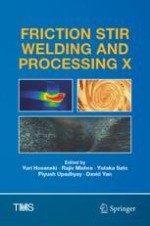This book is a compilation of the recent progress on friction stir technologies including high-temperature applications, industrial applications, dissimilar alloy/materials, lightweight alloys, simulation, control, characterization, and derivative technologies. The volume offers a current look at friction stir welding technology from application to characterization and from modeling to R&D. Contributions document advances in application, controls, and simulation of the friction stir process to aid researchers in seeing the current state-of-the-art.
